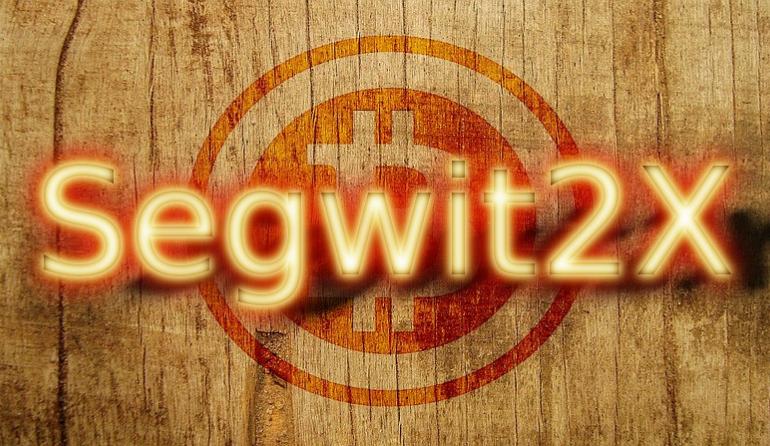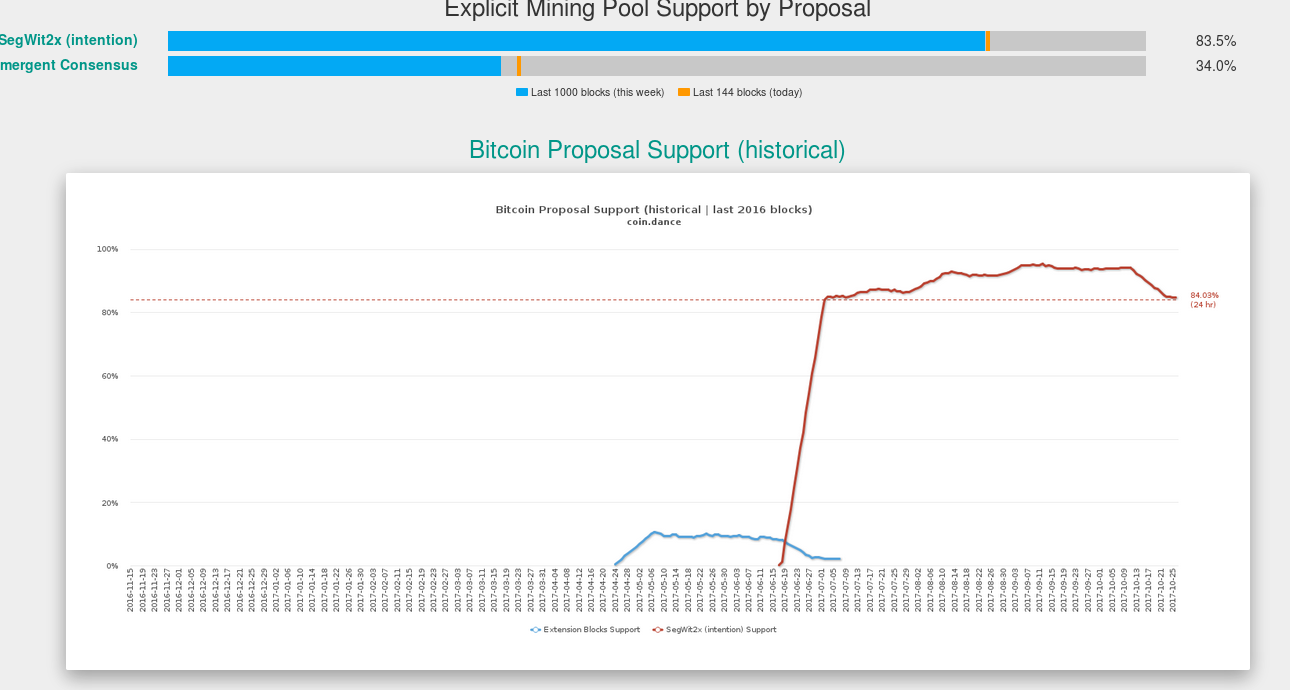
In a recent message to [Bitcoin-segwit2x] mailing list, project leader and apparently only developer, Jeff Garzik made a status update for the upcoming segwit2x upgrade in mid-November. Members of the mailing list questioned him about the decreasing NYA signaling and the future of btc1 (the fork of Bitcoin Core) after the hard fork, given Garzik’s recent involvement in a new altcoin, called Metronome.
In his message, Garzik wrote that everything is full steam ahead regarding the planned hard fork (scheduled to take place on November 16). He noted that the btc1 project continues to be in code freeze since August, which means only changes or fixes thought to be important pre-fork will be included.
Garzik also attempted to clarify the project’s naming scheme. In his words, btc1 is a source code fork of Bitcoin Core, very much like Fedora Linux is a fork/distribution intended for end users. As such, we track Bitcoin Core updates as necessary and pull those into the project. Segwit2x is the production release branch of btc1 (latest release here) and "segwit2x-dev" is the development and testing release branch, where all new changes go first, to be reviewed and tested before merged into the production branch.
Jeff Garzik, who is also Bloq’s CEO, mentioned that the segwit2x production branch is currently based on Bitcoin Core 0.14.x, while the development branch ( segwit2x-dev) is based on Bitcoin Core 0.15.x, the newer release of the reference Bitcoin client. Garzik noted that segwit2x would stay on Bitcoin Core 0.14.x at the moment due to “instability and bugs that upstream Bitcoin Core project is seeing”.
Garzik’s message ignited a long thread of messages between list members and Garzik. For instance, Melvin Carvalho, a mathematician and computer scientist, asked a question that went unanswered in a previous thread whether the threshold for release is still 80% miner signaling. At the time of writing, miner signaling for NYA (the agreement out of which Segwit2X was born) has fallen to 83.5% from 95% on September.

Chris Stewart of suredbits.com asked who will be maintaining B2X after the chain split is completed, expressing the fear that the project might fork and then have an abandoned btc1 codebase. At the moment, Stewart noted, the only dev is Jeff Garzik, who “has committed his time to a new project called Metronome” while no bitcoin Core developer has expressed willingness to devote time and effort into btc1.
Garzik: Btc1 is a sort of “Fedora for Bitcoin”
Garzik initially replied to Stewart’s expressed fears stating that there is “no reallocation of time or commitment”. He noted that Metronome and Bloq are out off-topic on the list, but cared to explain the situation with his company and its projects. Then, he continued re-iterating that btc1 is in feature freeze state until after the fork, to “keep changes to an absolute minimum”.
After the fork, Garzik envisages btc1 to be continued as a sort of “Fedora for Bitcoin” with “very exciting stuff.” At the same time, btc1 will be “a useful way to risk adjust versus Bitcoin Core instability or feature selection.” Moreover, Garzik continued, there are already a lot new changes for btc1 proposed for post-fork.
Morcos to Garzik: We need a plan who’s going to do development if we succeed.
Alex Morcos, an early pioneer of automated trading and co-founder at Chaincode Labs, asked for further clarification what Garzik envisages for btc1 after the hard fork. Morcos contemplated two scenarios: one where current (1X) Bitcoin chain “wins” and another where the new hard forked 2X chain wins.
For the latter case, Morcos made similar remarks to Stewart, that no current Bitcoin Core developer will be working on “Bitcoin.” Given Garzik’s statement that btc1 is based on Bitcoin Core 0.14.X, Morcos noted that “the model of continuing to base development off of the work of Bitcoin Core contributors when Bitcoin is defined by the 2X rules just doesn't make sense.” For this reason, he asked Garzik to come up with “some plan for who is going to work on it [btc1]” because in the “2X wins” scenario there will be no btc1 and Bitcoin Core, it will be just btc1. Morcos went as far as to mention that he thinks the latter scenario, where S2X fully prevails has very low probability.
Garzik replied to Morcos but did not offer some plan. Instead, he chose to repeat that “btc1 will continue as a sort of Fedora for Bitcoin after the fork”, noting that btc1 and Bitcoin Core codebases will be 99% the same. Naturally, Garzik seemed to assume that Bitcoin Core will continue to exist post-fork, even if Segwit2X chain is the dominant one. Morcos replied exactly that, asking what will happen if there is no upstream (no Bitcoin Core project).
Garzik once again replied citing the Fedora project paradigm. The answers by S2X project leader did not convince others. Stewart intervened to point out that the analogy (of btc1 to Fedora) does not hold, as Fedora is an operating system, not a consensus critical protocol such as Bitcoin. He even noted that “readers of this mailing list should have a high amount of skepticism when the two are compared.” Jared Lee Richardson came to Garzik’s defense noting that Jeff has just tried to implement what “miners agreed to in May” (NYA) and accused Bitcoin Core developers and supporters of banning “anyone who supported 2x”.
Melvin Carvalho replied to Richardson stating that Segwit2x still has mind share, but lacks consensus, which is simply suicidal.
Gallippi (Bitpay): No worries, We all have extremely strong teams
After that, Tony Gallippi of Bitpay came in the discussion stating that “nearly all bitcoin companies who operate at a large scale (say over 1 million users) need to run their implementation of Bitcoin. Bitcoin Core just does not scale well for large web applications.” He then noted that while most people will run BTC1 to get past the hard fork, his best guess is that post-fork most companies will go back to running what they need for their stacks, be it Bitcoin Ruby, BitcoinJ, etc. and BTC1 will be maintained for those users who want to stick with C++. He appeared sure that this will work. “We all have extremely strong teams” he noted and continued: “multiple implementations of the same consensus rules are a good thing for Bitcoin. A defensive consensus among the implementations would also be a good thing.”
